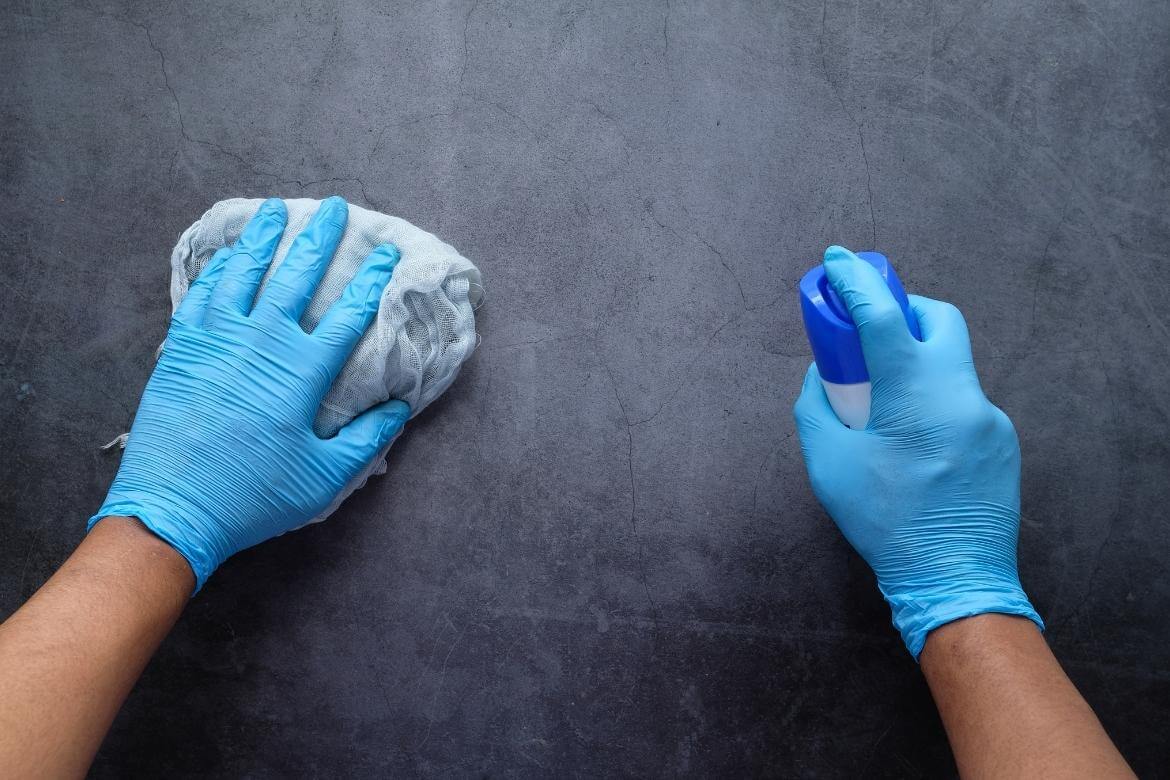23rd January, 2024
Calculating The COSHH Regulations 8-Hour Time-Weighted Average
Workplace exposure limits apply to certain substances under the COSHH regulations. The most common type of workplace exposure limit (WEL) is the 8-hour long-term exposure limit. But how do you calculate the 8-hour time-weighted average?

Nearly every business will use harmful substances in some form. So businesses must know about workplace exposure limits (WELs) because some hazardous substances have legal exposure limits.
Exposure limits are set by the HSE under the Control of Substances Hazardous to Health (COSHH) Regulations. Not every hazardous substance has a workplace exposure limit, but hundreds do.
While thousands of substances come under the COSHH regulations, around 500 hazardous substances have workplace exposure limits (WELs).
Exposure to a hazardous substance can happen in a variety of ways:
- Through breathing it in
- Direct contact
- Absorbed through the skin
- By swallowing
The main route of entry for hazardous substances (and the hardest to control) is inhalation. This is where exposure limits come into play, putting a measurable limit on the amount of exposure that can occur, by law.
It is important to be aware of the exposure limits that apply to the substances in use, so you can assess the exposure within your workplace, and take action to avoid exposure limits being exceeded.
Find out more about workplace exposure limits (WELs) in COSHH workplace exposure limits (WELs) explained.
Workplace exposure limits that apply under the COSHH regulations are subject to a time-weighted average (TWA).
The 8-hour TWA
The most common type of workplace exposure limit (WEL) is the 8-hour limit or long-term exposure limit.
Although an 8-hour limit sounds like the amount of exposure you are allowed every 8 hours, that's not what it means. It's actually a 24-hour limit. But because work shifts are usually 8 hours as standard, exposure is measured over 8 hours.
If a substance has an 8-hour exposure limit, this means that the exposure in any 24 hours is measured over 8 hours.
Not working 8-hour shifts? We will also show you how to calculate shorter and longer exposure in this blog post.
The term ‘8-hour reference period’ relates to the procedure whereby the occupational exposures in any 24-hour period are treated as equivalent to a single uniform exposure for 8 hours (the 8-hour time-weighted average (TWA) exposure).
The 8-hour time-weighted average is a legal limit that should not be exceeded. But how do you know if you are exceeding the exposure limit in your workplace?
You need to measure exposure!
To calculate if the level is being exceeded or when action needs to be taken, you'll need to work out the time-weighted average of the employees exposed and compare this to the exposure limit set by the HSE.
The calculation you can use is:
([hours]x[exposure)/8 = [8 hour TWA]
Where an operative works an 8-hour shift and is exposed to a substance during that period at a level of 50mg.m-3 the time-weighted average would be calculated as:
(8x50)/8 = 50mg.m-3
Broken down, this calculation is 8 hours exposure of 50mg.m-3, divided by 8 for the time-weighted average we are measuring. This example is pretty straightforward, but of course, in the real world, exposure isn't always so simple.

Are you really going to be exposed to a substance at the exact same level the whole way through your shift? Or are you more likely to have increased exposure during certain activities? Like when you are using a substance for a task.
Let's look at some more realistic examples.
Calculating changes in exposure
What if the exposure isn't always at the same level?
Some parts of a process may expose employees to a higher concentration of a substance than other parts of your work. And exposure may stop altogether when staff are taking a break during their shift.
In this situation, working sessions may be broken down to different exposure levels in your calculation.
For example, where an employee works an 8-hour shift and is exposed to a substance for 3 hours at 0.15mg.m-3 and for 2 hours at 0.20mg.m-3 the time-weighted average can be calculated by:
((3x0.15)+(2x0.2))/8 = 0.11mg.m-3

Longer shifts
Not everyone works 8-hour shifts. But you can't just reset the exposure clock every 8 hours. Remember, the 8-hour reference period is a reference period in every 24 hours in which exposure occurs.
If a WEL had a long-term exposure limit of 10mg.m-3, then 8 hours at 10mg.m-3 would be at the limit.
(8x10)/8 = 10mg.m-3
But 10 hours at 10mg.m-3 would be too much. Because now our hours of exposure is 10, giving us an 8-hour TWA of 12.5mg.m-3, which is above the legal limit.
(10x10)/8 = 12.5mg.m-3
We still divide by 8 to get our 8-hour average. And we still must not exceed the 8-hour WEL within any 24 hours.
Shorter shifts
Similarly, if an employee is working a 4-hour shift, they can be exposed to higher levels within those 4 hours, than they would be if they were working the full 8 hours.
The difference with shorter exposure is you can adjust the workplace exposure limit, providing this does not exceed any other exposure limit such as a short-term (15-minute) exposure limit.
However, it's not a free-for-all! After all, these are hazardous substances. So even if there isn't a short-term exposure limit, you still need to be careful if you plan on going above the WEL.

If you are going to expose an employee to an exposure level above the workplace exposure limit at any point during the shift, this exposure should be limited to one hour.
An example is when a person is exposed to a hazardous substance with a WEL of 18mg.m-³ (8-hour TWA) for 4 hours, an adjusted exposure level of 36mg.m-³ would apply over the 4 hours. However, exposure levels above 18mg.m-3 should be restricted to 1 hour.
((3x18 mg.m-³)+(1x50 mg.m-³))/4 = 26*mg.m-³
*above the 8-hour exposure limit but within the revised time-weighted average for a shorter exposure period.
Like with the 10-hour shift, you can still divide your actual exposure by 8 to get the 8-hour time-weighted average, and check you are under the legal limit.
((3x18 mg.m-³)+(1x50 mg.m-³))/8 = 13mg.m-³
Once you have calculated the 8-hour time-weighted average for the employee, you can compare this with the workplace exposure limit, to determine if the level of exposure is acceptable.
If the exposure limit is exceeded, action must be taken to bring exposure within the set limits for the particular substance(s).
Find out more in workplace exposure limits explained, and get help with COSHH with our COSHH assessment templates.
This article was written by Emma at HASpod. Emma has over 10 years experience in health and safety and BSc (Hons) Construction Management. She is NEBOSH qualified and Tech IOSH.
Need to know COSHH?
Take our COSHH awareness elearning course and get your certificate today.
COSHH CourseRecent posts like this...

What Is A COSHH Assessment?
The COSHH regulations require you to do a COSHH assessment when using or creating hazardous substances. Most businesses will need them. But what is a COSHH assessment, its purpose, and what does this document need to include?
Read Post
9 Ways To Comply With COSHH
The Control of Substances Hazardous to Health (COSHH) Regulations apply to every workplace. Here are nine ways you can comply with COSHH - including identifying hazardous substances, assessing the substances you use and produce in your workplace, controlling the risks, keeping records, and providing training.
Read Post
Where Does COSHH Apply?
COSHH is a law that requires employers to control substances that are hazardous to health. Most businesses use substances that are hazardous to health, from cleaning chemicals to creating gases, dust and vapours - so the COSHH regulations will apply to some aspects of most businesses.
Read Post